Table of Contents
Overview – Proteins
Proteins are complex biological polymers made from amino acid monomers and are central to nearly every physiological function in the body. They serve structural, enzymatic, transport, hormonal, immune, and regulatory roles. Importantly, all genetic information stored in DNA exists to encode the synthesis of proteins, making them the functional end-products of gene expression. This guide covers protein structure, synthesis, function, and enzymatic action in a concise, clinically relevant format.
Definition
Proteins are biological polymers made of linked amino acids via peptide bonds. They are the most functionally diverse macromolecules in living organisms.

Functions of Proteins
Proteins have a wide range of essential roles in human physiology:
- Enzymes (e.g. digestive enzymes, metabolic catalysts)
- Hormones (e.g. insulin, growth hormone)
- Carrier proteins (e.g. albumin)
- Membrane transporters (e.g. Na⁺/K⁺-ATPase)
- Receptor proteins (e.g. cell signaling)
- Structural proteins (e.g. collagen, keratin)
- Contractile proteins (e.g. actin, myosin in muscle)
- Storage proteins
- Defensive proteins (e.g. antibodies)
- Sensory and regulatory proteins
Key Concept: The primary purpose of DNA is to encode instructions for protein synthesis via transcription and translation.
Amino Acids
Each amino acid contains:
- A central carbon atom
- An amino group (–NH₂)
- A carboxyl group (–COOH)
- A variable side chain (R group)
- There are 20 biologically relevant amino acids:
- Essential amino acids: Must be consumed in the diet
- Non-essential amino acids: Can be synthesized by the body
- Some are considered conditionally essential under certain physiological states
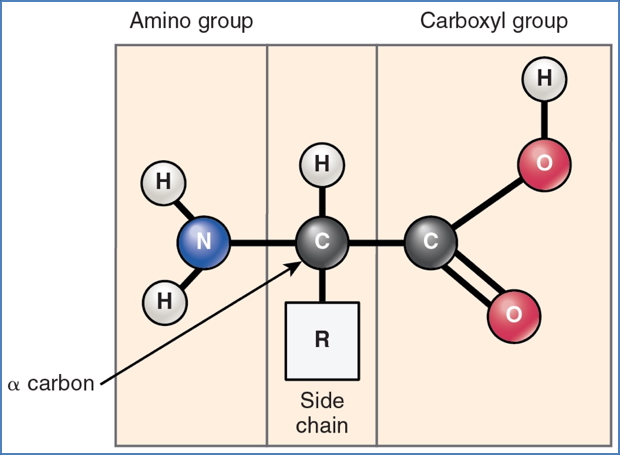
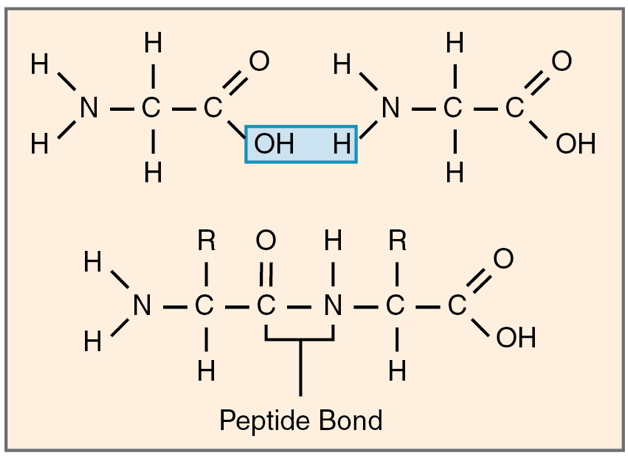
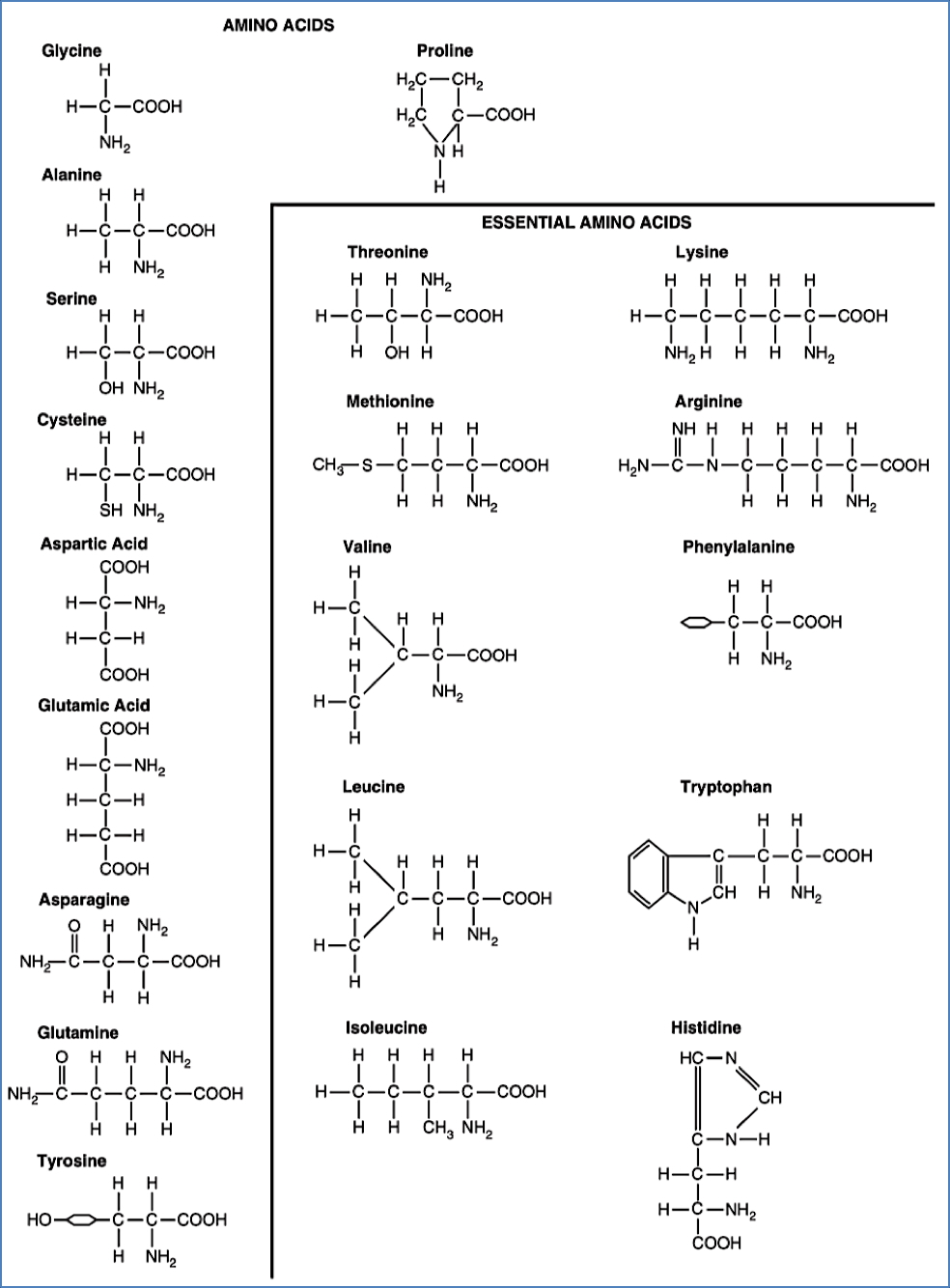
2. Source: https://doctorlib.info/physiology/textbook-medical-physiology/67.html
Protein Structure
Primary Structure
- Linear sequence of amino acids
- Joined via peptide bonds through dehydration synthesis
- Directionality: written from amino (N) → carboxy (C) end
Secondary Structure
- Local folding via hydrogen bonds
- Forms:
- Alpha-helix
- Beta-pleated sheet
Tertiary Structure
- 3D folding due to side chain interactions
- Creates a functionally active shape for many proteins
Quaternary Structure
- Combination of multiple polypeptide subunits
- Example: Hemoglobin (4 subunits, oxygen transport)
Note: Protein shape is sensitive to environmental changes — denatured by extremes in temperature or pH

CNX OpenStax, CC BY 4.0 <https://creativecommons.org/licenses/by/4.0>, via Wikimedia Commons
Proteins as Enzymes
What Are Enzymes?
- Proteins that catalyze biological reactions
- Function by lowering activation energy
- Often require cofactors (e.g. metal ions or vitamins)
Naming of Enzymes
- Usually end in “-ase”
- E.g. Sucrase: breaks down sucrose
- E.g. Lipase: breaks down lipids
- Can also reflect the type of reaction:
- Oxidase: catalyzes oxidation
- Hydrolase: catalyzes hydrolysis
- Exceptions: Pepsin, trypsin
Enzyme Mechanisms
Lock and Key Model
- Enzyme active site fits substrate precisely
- High specificity

Induced Fit Model
- Active site conforms to fit the substrate
- More versatile, fits a broader range of substrates

CNX OpenStax, CC BY 4.0 <https://creativecommons.org/licenses/by/4.0>, via Wikimedia Commons
Steps in Enzymatic Reaction
- Substrate binds to active site
- Enzyme-substrate complex forms
- Reaction occurs
- Product is released
- Enzyme returns to original shape
Factors Affecting Enzyme Activity
Temperature
- Low temp = slow activity
- Optimal temp = peak performance (~37°C in humans)
- High temp = denaturation
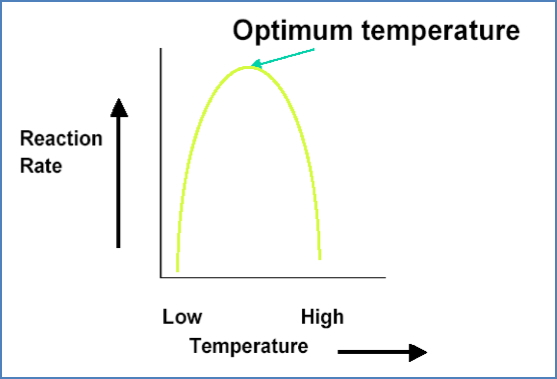
Substrate Concentration
- Increased substrate → increased activity (up to saturation point)
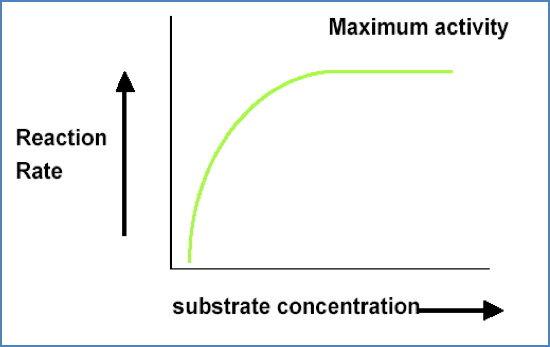
pH
- Each enzyme has an optimal pH range
- Outside this range: activity drops due to structural changes

Summary – Proteins
Proteins are essential, multifunctional biological polymers made from amino acids. They form the molecular machinery of life, from enzymes and hormones to transporters and structural components. Protein function is dictated by their complex structure, and their activity is sensitive to environmental factors. For a broader context, see our Cell Biology & Biochemistry Overview page.